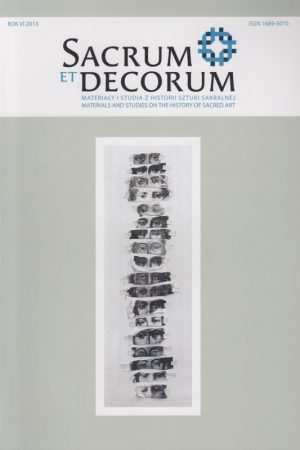A look at vera icon: Dorothee von Windheim’s play with tradition
Keywords:
Dorothee von Windheim, the true Face of Christ, Strappo, the Shroud of Turin, mandylion, vera icon, acheiropoietos, Holy Face, Salve Sancta FaciesAbstract
The first true image of God was created on the inititiative of a woman, St Veronica. She, the first woman-artist, paradoxically managed to capture tangibly, on a canvas, the image of the One who is intangible. Since the early Middle Ages, the true Face of Christ, the vera icon, has inscribed itself in the iconographic tradition of both Latin and Byzantine Christianity. One of many modern artists who’s ideas correspond to the work of Veronica is Dorothee von Windheim. In her cycle Salve Sancta Facies, by using traditional photography, the artist introduces the viewers into a game of perception, basing on which they should pose themselves a question about the authenticity of an artwork. Thus the artist deconstructs the originally adopted cult-related character of the vera icon and builds new semantic structures. Therefore, von Windheim’s creative attitude and her cycle Salve Sancta Facies place her among those artists anchored in the modernist understanding of the work of art. For von Windheim looks for the truthfulness (vera) and authenticity of the artwork not just in its cult-related and narrative message, but rather in its physical structure, thus treating the achievements of tradition as the building material for a new, autotelic artwork.Downloads
Downloads
Published
How to Cite
Issue
Section
License
Copyright (c) 2013 Sacrum et Decorum

This work is licensed under a Creative Commons Attribution-NonCommercial-NoDerivatives 4.0 International License.
In line with the Open Access policy, authors retain full copyright to their articles – without restrictions.
Authors can deposit their articles in a repository of their choice.


